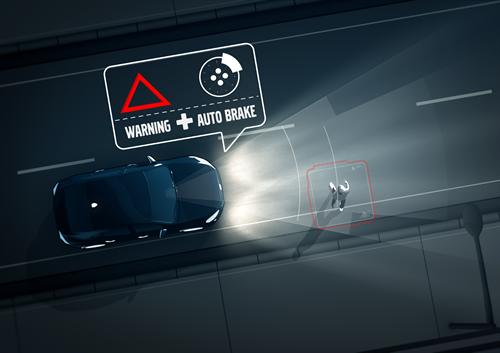
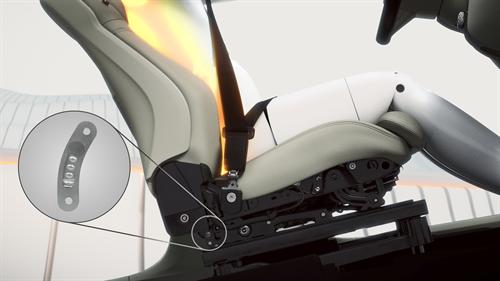
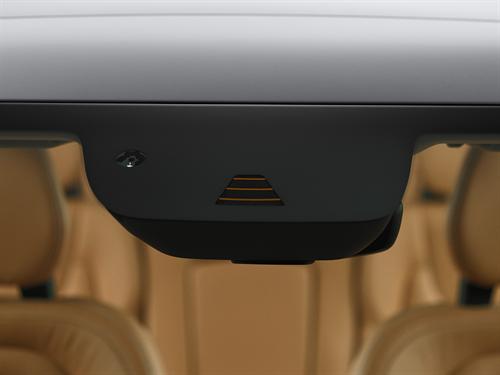
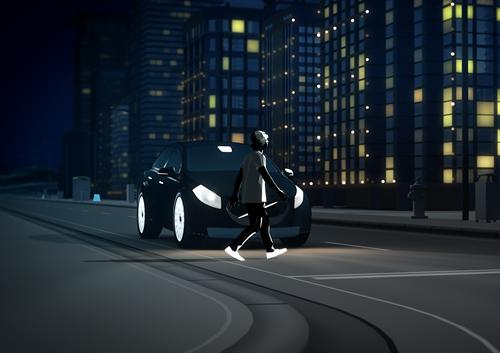
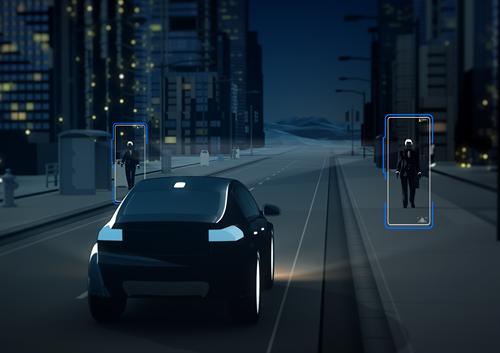
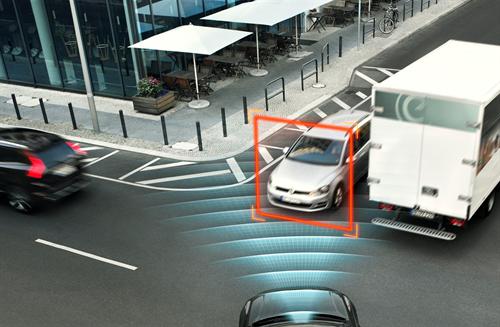 World first auto brake when turning in front of an oncoming vehicle
World first auto brake when turning in front of an oncoming vehicle- World first solution focusing on accidental road departure
- Most advanced standard safety package on the market
- Automatically follows vehicle in front in slow-moving queues
- Five times more Ultra High Strength Steel (boron steel) than first-generation XC90
Volvo Cars’ all-new XC90 – which will be revealed in August – will offer the most comprehensive and technologically sophisticated standard safety package available in the automotive industry. The new technologies will take the company a significant step closer to its vision that no one will be killed or seriously injured in a new Volvo car by 2020.
The standard safety package on the all-wheel drive, seven seat premium SUV will include two world first safety technologies: a run-off road protection package and auto brake at intersection capability. These innovations will form part of a suite of safety features that will make the all-new XC90 one of the safest cars ever made.
“Our starting point on safety is the same today as it was 87 years ago: real-life situations,” says Dr Peter Mertens, Senior Vice President Research and Development of Volvo Car Group. “We study data. We crunch numbers. We innovate. The result is one of the safest cars ever made.”
World first number 1: Run-off road protection
Run-off road is a common accident type with different causes, such as driver distraction, fatigue or poor weather conditions. For example, half of all traffic fatalities in the United States are road departure accidents, while in Sweden, single-vehicle accidents involve one third of all fatal and severe injury crashes with passenger cars.
Volvo is deeply troubled by these statistics. Even though there are currently no regulatory or rating tests to examine a car’s ability to handle run-off road accidents, the company has decided to develop the technology to protect occupants should these situations occur.
“Committing to safety is not about passing a test or getting a ranking,” says Prof. Lotta Jakobsson, Senior Technical Specialist Safety at Volvo Cars Safety Centre. “It is about finding out how and why accidents and injuries occur and then developing the technology to prevent them. We lead, the industry follows.”
Volvo Cars developed Safe Positioning to address these situations.
The Safe Positioning capability means that in a run-off road scenario, the all-new Volvo XC90 detects what is happening and the front safety belts are tightened to keep the occupants in position. The belts are firmly tightened as long as the car is in motion.
To help prevent spine injuries, energy-absorbing functionality between the seat and seat frame cushions the vertical forces that can arise when the car encounters a hard landing in the terrain. The solution is capable of reducing the vertical occupant forces by up to one third. This counteracts spine injuries, which are serious and relatively frequent consequences of these situations.
The XC90 also features technologies that help the driver avoid run-off road scenarios:
The Lane Keeping Aid applies extra steering torque if the car is about to leave the lane unintentionally, while Driver Alert Control, which is also standard, detects and warns tired or inattentive drivers. It even has Rest Stop Guidance, which directs the driver to the nearest rest area.
World first number 2: Auto brake at intersections
The XC90 is the first car in the world with technology that features automatic braking if the driver turns in front of an oncoming car. This is a common scenario at busy city crossings as well as on highways, where the speed limits are higher. The all-new Volvo XC90 detects a potential crash and brakes automatically in order to avoid a collision or mitigate the consequences of a crash.
“These two world firsts are further examples of how new technologies target substantial real-life traffic problems. This strategy moves us closer and closer to our ambition that by 2020 no one should be killed or seriously injured in a new Volvo,” says Prof. Lotta Jakobsson.
Broad range of Safety features for the all-new XC90
There is a wide range of other safety innovations available on the all-new XC90. They include the following:
Pre-crash protection in rear impacts
Rearward facing radars detect if a rear impact is imminent and safety belts are tightened in advance in order to keep the occupant in a good position. Lights also start flashing to warn the driver behind, and the brakes are activated to help reduce the impact on the occupants.
Together with Volvo Cars’ new seat design, which integrates the next generation of the groundbreaking Whiplash Protection System (WHIPS), this new holistic rear impact pre-crash function helps reduce whiplash injuries.
Groundbreaking rollover prevention and protection
The all-new XC90 comes with the latest generation Roll Stability Control as standard. The system uses advanced sensors to calculate the risk of rolling over. If the risk is assessed as high, engine torque is restricted and some braking force is applied to one or more wheels to counteract the rollover tendency.
If a rollover is inevitable, the Inflatable Curtains are activated. They cover all three seat rows for an extended period of time to help prevent head injuries.
All seven seats in the XC90 have pyrotechnical safety belt pre-tensioners that also activate in rollover situations.
City Safety auto braking functions
City Safety will become the umbrella name for all of Volvo Cars’ auto brake functions – which are standard equipment in the all-new XC90.
The purpose of the new collision avoidance system is to assist the driver in case there is a high risk of collision with another vehicle, pedestrian or cyclist through an intuitive warning strategy and a brake support system. If a collision is almost unavoidable, the system will provide autonomous braking when the driver fails to respond to the imminent threat.
“City Safety is one of the most advanced standard crash prevention offers you can find in a modern car. It now covers vehicles, cyclists and pedestrians in front of the car, day and night,” explains Lotta Jakobsson. “We are now able to cover the whole span from dusk to dawn by a smarter and faster high-sensitive camera combined with advanced exposure control.”
Extended Road Sign Information
The XC90 is the first car on the market with Road Sign Information technology as standard. It has been further enhanced to show an extended selection of road signs in the digital display in front of the driver, such as various types of supplementary signs.
Covers the blind spots
The Blind Spot Information System informs about vehicles in the blind spots. It also alerts the driver to vehicles that are approaching fast from behind.
Queue Assist
Queue Assist enables safe and comfortable driving by following the vehicle in front in slow-moving queues. Acceleration, braking and steering are controlled automatically.
“Distraction and inattentiveness are the most common cause of accidents in modern traffic. The Adaptive Cruise Control with Queue Assist makes driving safer and more relaxed in monotonous stop-and-go traffic by adding steering assistance to the speed adaption,” explains Prof. Lotta Jakobsson.
Stronger in every sense
To help keep the occupant space inside intact in a crash, the all-new XC90 has literally been made stronger in every sense. This is achieved by more extensive use of hot-formed boron steel, which is the strongest type of steel presently used in the car body industry.
The complete safety cage around the occupants is made from hot-formed boron steel and is designed for maximum occupant protection in all types of crash scenarios. The hot-formed steel amounts to about 40 per cent of the total body weight.
“This is approximately five times more than the first generation XC90. To our knowledge, this high usage of high-strength steel is unique compared with our competitors,” says Prof. Lotta Jakobsson.
Vision 2020
Volvo Cars’s vision is to design cars that should not crash. In the short term, the aim is that by 2020 no one should be killed or injured in a new Volvo car. The World Health Organisation (WHO) estimates that some 1.2 million people are killed and more than 50 million wounded in traffic accidents every year. These figures are expected to increase rapidly if no action is taken. Volvo is determined to take the lead by using its vision of a collision-free future as a guiding principle.
The Volvo Cars Traffic Accident Research Team has investigated traffic accidents since 1970. Today, its accident database contains information about 43,400 accidents.
By using knowledge from real traffic situations in the research, Volvo has learned how to design cars that offer a very high level of safety in collisions. The company regards this as a very important base of knowledge when identifying high-tech solutions that can help to avoid or mitigate accidents entirely. In order to take this a step further, the Traffic Accident Research Team not only studies crashed cars but also investigates driving scenarios, including driver behaviour, in order to learn more about what can lead to hazardous traffic situations.
INNOVATIVE INTELLISAFE SOLUTIONS MAKE TRICKY PARKING AND TIGHT MANOEUVRES EASY AND SAFE
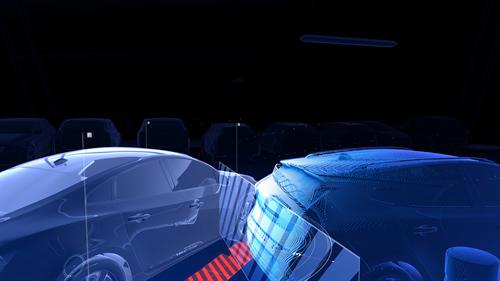
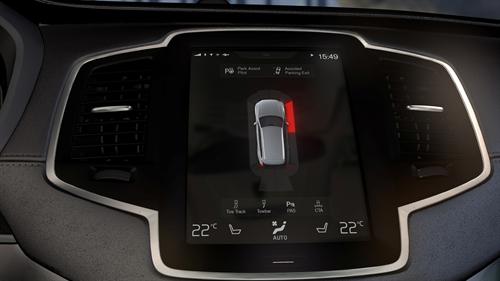
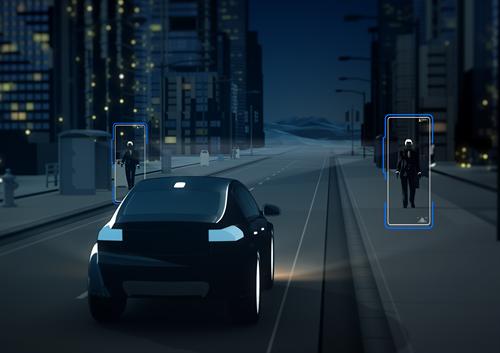
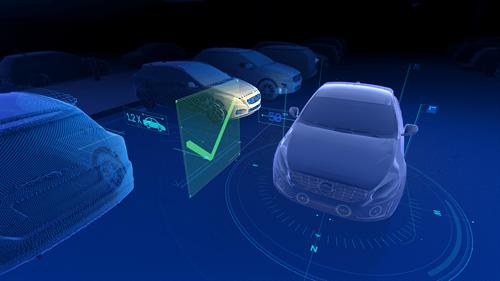 Automatic bay parking as well as parallel parking
Automatic bay parking as well as parallel parking- The driver gets a bird’s-eye view from above the car
Designed around modern car buyers’ expectations of smart functionality, the all-new Volvo XC90 features a set of innovative solutions that make tricky parking situations and manoeuvring in tight spaces easy.
The IntelliSafe support technologies include an extended Park Assist Pilot, which now also offers automatic reversing into a parking bay as well as entering and exiting a parallel parking spot. The XC90 can also display a digitally created bird’s-eye view of the 360° area around the car on the large centre screen.
“Several studies by research institutes reveal that up to two-thirds of interviewed motorists feel uncomfortable in tight parking situations. Options such as the extended Park Assist Pilot and bird’s-eye view function turn these potentially stressful situations into comfortable, precise and safe manoeuvring,” says Dr Peter Mertens, Senior Vice President Research and Development of Volvo Car Group.
The further-developed Park Assist Pilot facilitates both parallel and bay parking by taking over and operating the steering wheel while the driver handles the gearbox and controls the car’s speed.
Ultrasonic sensors detect the parking space
The parking manoeuvre is based on information from twelve ultrasonic sensors around the car. When the driver activates the Park Assist Pilot in a parallel parking situation, the sensors start to scan the side of the car for empty parking slots. When a parking slot measuring a minimum of 1.2 times the car’s length is detected, the driver is notified by an audible signal and a message in the instrument cluster. In a bay parking situation, the slot needs to be the width of the car plus one metre.
The display then guides the driver step by step via texts and animations in the instrument cluster until the car is parked.
A bird’s-eye view from above the car
The all-new XC90 also features a 360° Surround View that gives the driver a bird’s-eye view, an overview of the surrounding area, seen from a point above the car.
This bird’s-eye view is enabled by four concealed fish-eye cameras – one integrated into the front, one integrated in each of the door mirrors and one fitted above the rear number plate.
The 360° Surround View also gives the driver comfortable access to other views of the surrounding area such as front, rear and side views.
“The 360° Surround View is exceptionally useful in situations where the driver’s direct view is obstructed, such as leaving a tight driveway with obstacles on the sides or when reversing towards a trailer or caravan,” says Peter Mertens. “360° Surround View also provides great support during parking, for instance when you want to make sure that all parts of the car are within the lines of a parking spot.”
Cross Traffic Alert
The outstanding IntelliSafe solutions in the all-new XC90 also include Cross Traffic Alert, which covers the driver’s back when reversing out of a parking space. It warns of approaching traffic up to 30 metres on each side, alerting the driver with an audible signal and a warning on the centre screen.

You must be logged in to post a comment.